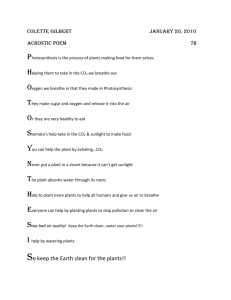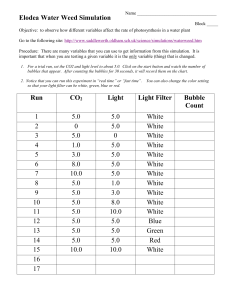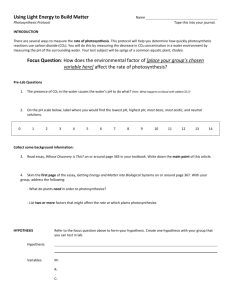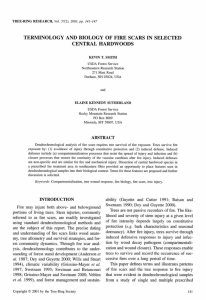Chapter 2 Plant Structure and Function
advertisement
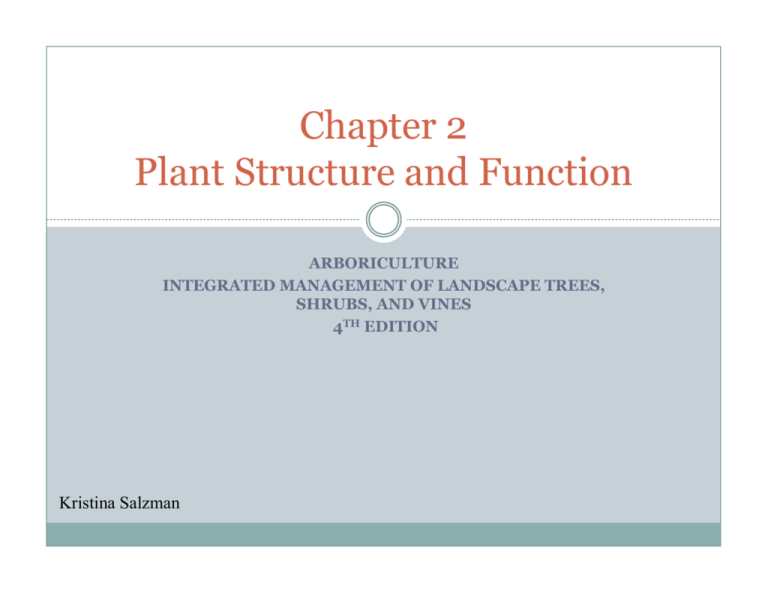
Chapter 2
Plant Structure and Function
ARBORICULTURE
INTEGRATED MANAGEMENT OF LANDSCAPE TREES,
SHRUBS, AND VINES
4TH EDITION
Kristina Salzman
Mechanical design of trees
y Evenly distribute stress along surfaces
y No overloaded or under loaded points over
time
y Active cambium growth in response to stress
y Internal anatomy directly related to strength
y Tree growth reveals stress pattern
Crown
Leaf cross-section
Cross-section of a pine needle
Tree Crown
Excurrent vs Decurrent
Sweet gum
White ash
Crown
y Shoots
y Buds
{ Definition
{ Arrangement
y Shoot elongation
{ Spurs
{ Watersprouts vs suckers
{ Patterns of shoot elongation
Periodicity
Ù Apical dominance
Ù
Tree roots
Mycorrhizal fungi
y Myco = fungus; rhiza = root
y More than 90% of plants in nature have a
mycorrhizal symbiont
y Ectomycorrhizae = fungus forms a sheath outside the
root
y Endomycorrhizae = no sheath; inside the root
Ecotomycorrhizal root tips
Tree Trunk cross-section
y Xylem
{
{
{
Wood
Four functions
Gymnosperms
(nonporous) vs
angiosperms (porous)
y Phloem
{
{
{
Two functions
Bark
Cork cambium
Trunk
y Taper
y Movement
y Unidirectional
shading of tree
y Reaction wood
Tension wood vs
compression wood
{ Dry vs in live state
{
Compartmentalization
y Barriers or
compartments
formed around decay
y CODIT
Wall 1
{ Wall 2
{ Wall 3
{ Wall 4
{
Decay
y Variable
y Stages
{ Incipient
{ Early
{ Intermediate
{ Advanced
y Two ways
{ White rots
{ Brown rots
Branch attachment
y Biological
(transport) vs
mechanical (growth)
y Branch collar
y Included bark
Palms
y Monocots
y No secondary tissue
y Single growing point
y Two measurable heights
Angiosperm flowers
y Complete
y Perfect
y Staminate vs pistillate
y Fruitfulness
y Seed viability
{Seed
dormancy
{Seed coat imperability
Gymnosperm flowers
y Pollen cones (smaller and lower) vs seed cones
Tree death
y Mortality spiral
y Biological and
environmental
y Mechanical
Photosynthesis
y Using CO2, water, and light to produce O2 and sugars
y Temperature
y CO2—limiting factor when light is sufficient
y Water
y Nutrients
y 6 CO2 + 6 H2O → C6H12O6 + 6 O2
Carbon dioxide + Water + Light energy → Glucose + Oxygen
Photosynthesis
Temperature
y Range from near freezing to 104°F
y High temperatures also increase
respiration
Carbon Dioxide
Water
yEssential for photosynthesis
yDeficiency
yExcess
Nutrients
y Needed to increase leaf area
y Nitrogen (even at low levels)
y Iron
y Pesticides, air pollution, insects and diseases
directly and indirectly reduce the rate of
photosynthesis
Sooty mold
Respiration
y Using photosynthates as fuel
y Needs oxygen
y Releases water and CO2 also
y Effects of temperature
y Effects of soil water
y Effects of soil oxygen
y Needed for compartmentalization
Transpiration
y Dependent upon leaf structures
y Environmental effects
Genetic growth mechanisms
y Anatomy and structure
y Pest and environmental tolerances
y Life history patterns
y Life span
y Compartmentalization response
y Production of allelopathic chemicals
Genetic Blue Prints
Environmental growth mechanisms
y Any environmental factor
y Adequate chilling
y Day length
Time as a growth mechanism
y Juvenility and
maturity
y Existing structure
and vigor of the
tree
y Maturity vs Aging
Mt St Helens erupted 1980
Changes slow over time
Plant Growth Regulators
y Auxins
y Gibberellins
y Cytokinin
y Abscisic acid
y Ethylene
Auxin
y Used in plant propagation
y Used in high concentrations = 2,4-D
(Herbicide)
Ethylene
y Used in to ripen fruit and as a
defoliant
Root-shoot ratio
y Lower on high-quality sites
y Top usually 5-6 times heavier than the roots
y Usually a negative situation in containers
No tree part is independent of any other part.
Questions?

